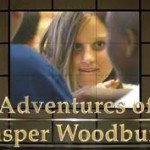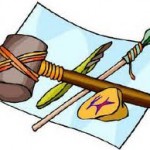Jasper Series: A Model of Social Constructivism
by Jasmeet Virk ~ February 11th, 2012Jasper series prompted a very robust discussion on Vista. We examined the series through the lens of pedagogy, technology, our own beliefs and practices, and the existing trends. It is impressive that despite being three decades old, the series is based on sound pedagogical beliefs of social constructivism and anchored learning, which are the “trends” in education at present.
Cognitive Affordances:
While I may not apply the Jasper series -as it is -in my class, it has provided for me a model to create learning environments in which students can work collaboratively in a multimodal, multidisciplinary environment and problem solve through dialogue and critical thinking. What appeals to me most about the series is its prerequisite of a blended learning environment which is so suitable for learning in elementary education. Such a setup will allow students not only support of their peers and teachers through their zone of proximal development in a F2F setup. Another theoretical base that will be very conducive in elementary education will be the anchored learning approach. This approach is very similar to the situated learning approach but is not as open ended. I see this as a graduating step towards an open ended, ill designed problem based learning.
Technological Affordances:
The technology of the series gets retrained by its time. It mainly provides for multimodality through the videodisc. But as technology is evolving the creators’ of the series have added technology which is very conducive to social constructivism. The use of Teleconference assessment is a great interactive tool for formative assessment the development of SMART extension has also given the series an online community of learners through the Smart Lab, A Kids- online space as a model to help in the ZPD and above all a Toolbox – for tools needed for computation. By freeing the mind from simple computation to focus on higher level thinking, the Jasper series has exploited the affordances of current technology to allow for better by providing a wider community of practice, active learning, scaffolding and assessment for learning, besides multimodality. I think the technology has been interwoven well with the pedagogical needs.



